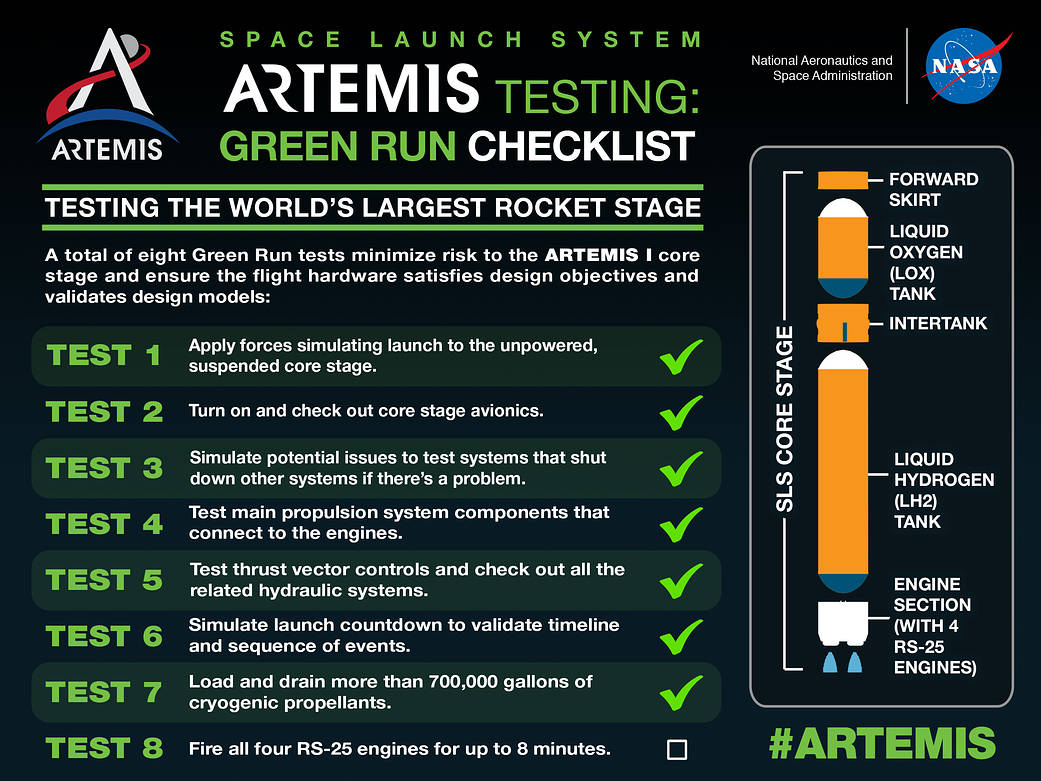NASA will soon fire up the most powerful rocket ever built
This liquid fuel engine is a beast.
NASA plans to ignite the most powerful rocket it's ever built on Jan. 17 according to a statement from the agency.
It will be the first firing of the Space Launch System (SLS), the long-awaited (and delayed) rocket ship that NASA plans to use for non-commercial human space flight. It's the centerpiece of NASA's Artemis program, a crewed mission to land, in language NASA frequently uses, "the first woman and next man" on the moon.
However, during this first ignition, only the liquid fuel engines at the core of the rocket will be tested, without the solid fuel boosters that will one day help carry SLS into orbit.
When the SLS core test-fires, it will become the most powerful rocket ever ignited on Earth.
At 322 feet tall (98 meters), the SLS stands a head shorter than the 363-foot (110 m) Saturn V rockets that carried astronauts to the moon in the 1960s and '70s. But this rocket is substantially more powerful, producing 15% more thrust during liftoff and ascent.
Raw power doesn't translate neatly into how much mass the rocket can carry into space.
When complete, if everything goes right, the SLS will have the capacity to carry more than 27 tons (24,000 kilograms) to the moon — much more than the 24 tons (22,000 kg) the Space Shuttle hauled into low-Earth orbit, though technically less than the Saturn V carried to the moon. (However, according to Live Science sister site Space.com, less of the SLS carrying capacity will be wasted on the different rocket stages and fuel, making the SLS an overall better cargo mover.)
Sign up for the Live Science daily newsletter now
Get the world’s most fascinating discoveries delivered straight to your inbox.
The test will cap off an eight-part testing program NASA has dubbed the SLS "green run."

The seventh part, successfully completed Dec. 20, 2020, showed that the rocket could be loaded with 700,000 gallons (265,000 liters) of supercooled liquid fuel and then have that fuel removed without incident.
The hot fire will take place at at NASA’s Stennis Space Center near Bay St. Louis, Mississippi.
"During our wet dress rehearsal Green Run test, the core stage, the stage controller, and the Green Run software all performed flawlessly, and there were no leaks when the tanks were fully loaded and replenished for approximately two hours," Julie Bassler, SLS Stages manager at NASA’s Marshall Space Flight Center in Huntsville, Alabama, said in the statement. "Data from all the tests to date has given us the confidence to proceed with the hot fire."
The test will likely be streamed on NASA's YouTube channel.
Originally published on Live Science.











